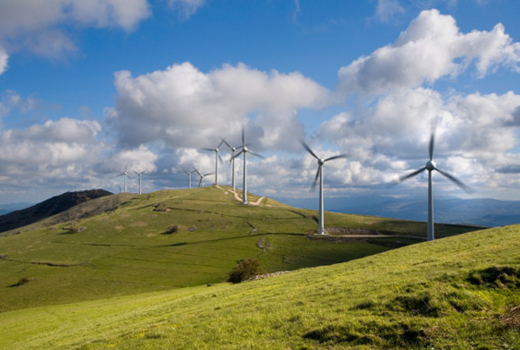The Future of Electricity: Embracing Transition
Life is full of transitions. Some are small like the transition kids make in the morning from being stone-cold asleep to biking off to school. Some are big like graduating from school and entering professional life. Some transitions are personal, and some are societal. One example is society’s transition from land lines to mobile phones. Technology transitions and society with it.
One could argue that James Watt’s invention of the condensing engine in the 1760s was the technological catalyst, which spurred the industrial revolution – perhaps the biggest transition human society has experienced in the past one thousand years or more. Through careful study of the science involved in the use of steam in engines, the mechanics and, ultimately, the costs and potential economic uses, Watt led the vanguard of an enormous change in human society that he could never have foreseen. At the time, many naysayers existed who thought his work with engines and steam power would not surpass the quality and reliability of water power, horse power or human power, as it had not been able to do for 100 years prior. And while horsepower remains with society as a unit of measure today, use of horses gradually gave way to steam engines. At the time of Watt’s invention, wood was the dominant energy resource. However, due to advantages in energy density, ability to mine versus harvest and the fact that steam engines could be used to pump water from coal mines, coal became the fuel of choice for steam engines.
With Watt’s invention, engineers and businessmen now had the ability to turn the thermal energy released in fire into useful mechanical energy and that into goods and services, which eventually led to profits and prosperity. The steam engine’s successful introduction into the marketplace was followed by invigorated interest in the science underlying its operation, the fire that powers it, the materials it was made from and the steam that flows through it. The basic principle of energy conservation arose from these investigations accompanied by other fundamental discoveries, such as Michael Faraday’s discoveries, which led to invention of the electrical generator. Later, electrical generators would be run with mechanical energy generated by steam engines, frequently fueled with coal. Industry transitions and society with it.
Fast forward to the 1930s. Coal was the dominant energy resource with significant infrastructure to support it. With electrification of the United States and building of large-scale transmission lines, it became possible to build large, centralized power plants that could transport electricity to load centers far away. This, combined with successful use of coal-fired steam engines, led to a surge in building coal-fired, steam power plants beginning in the 1950s and peaking in the 1970s. These large power plants have supplied the United States with relatively inexpensive and reliable electricity for many years, thus supporting American economic prosperity. Many of these power plants are still working today – a testament to the hard work and ingenuity of engineers and business people that run these plants.
In the meantime, in the latter half of the 19th Century significant discoveries of oil occurred, which could be transformed into useful liquid fuels that packed more of a punch than coal and were much more convenient to store and transport.

© iStockphoto.com/-hakusan-
With availability of petroleum products came the invention of the internal combustion (IC) engine. While initial IC engines were no match for coal-fired steam engines, with research and development IC engines eventually displaced the steam engine. By the 1950s petroleum surpassed coal as the dominant energy resource accompanied by a large increase in natural gas usage. Another transition.
In the 1760s when Watt was walking the halls at the University of Glasgow less than one billion people inhabited the planet. Now more than seven billion people inhabit the planet, all in need of energy resources directly linked to quality of living. This dramatic increase in population has intensely increased the need for energy. Given that most energy resources involve combustion of fossil fuels like coal, petroleum or natural gas, humans dispose massive amounts of carbon dioxide emissions into the atmosphere.
Science informs people that the presence of this carbon dioxide will lead to certain and potentially severe changes in the climate with implications for the planet’s natural systems and human society. Though some may dispute the existence of climate change, the same science that allows people to design amazingly reliable steam power plants and IC engines also instructs them on the existence of climate change. Indeed, lessons from energy used by humans during the last century lead to two important paradigm shifts: Resources are finite, and humanity can deplete them. And, use of these resources can impact and permanently change natural systems on the planet – systems on which all living creatures depend for survival. This portends another transition, one to renewable and clean energy resources.
Society is very fortunate to have a thorough understanding of science and engineering, one that allows people to see into the future and to make rational decisions based upon the science and evidence researchers collect that supports it. As humanity looks forward, knowing it must transition to cleaner energy resources, let it focus on electricity generation. In the United States 40 percent of energy use is as electricity and nearly 70 percent of electricity results from burning fossil fuels. Furthermore, power plants Americans build are capital-intensive and have long life times. For example, the median age of coal-fired power plants in the national fleet is more than 30 years. Thus, decisions Americans make concerning what power plants to build are long-term decisions that will be handed down to subsequent generations, which require long-term thinking and decision making.
So, how does humanity plan its electrical system of the future to fulfill dual roles of reliability and affordability while meeting ever-growing demands of developed and undeveloped countries of the world? First, people need energy sources that are clean and affordable. Renewable resources of wind, solar and hydropower are able to fulfill this role along with geothermal energy, biomass and potential development of tidal and ocean energy devices. Many of these resources depend on weather, causing their availability to vary over time spans from seconds to days and/or seasons to years. This variability, and the inherent challenge in accurately predicting renewable energy output, hardly jives with the current mode of operation of the electrical system, which was developed throughout the last one-half of the 20th Century. The latter relies on power generation resources that are “on demand” and do not depend on the naturally varying weather but that are not particularly flexible.

© iStockphoto.com/deliormanli
This leads to the second requirement of the future electricity system: It must be flexible. Here, flexibility means having generation resources capable of responding to combined changes in customer demand for electricity and the output of renewable energy generators. Increased flexibility will improve system reliability. Flexibility can be achieved through smart use of existing, agile generation resources, such as hydropower and natural gas fired turbines, and through changes in markets and organizational structures that govern operation of the electrical system. The ability of a single utility to balance its load with generation tends to improve, often significantly, when it is able to function as part of a robust electricity market. Furthermore, the ability to economically address operational and reliability issues improves when neighboring utilities cooperate, as is currently done in sharing responsibility to address unexpected power outages but much less so in balancing load with generation. Utilities that incorporate large amounts of renewable energy benefit from cooperation.
Thinking more progressively, new ways exist to operate the electrical system, which can lead to additional flexibility while keeping the price of electricity affordable. Developing “smart grid” technologies that allow power customers to participate with the utility in balancing load with generation can improve system flexibility and reliability. The same may be true for developing microgrids and empowering consumers through knowledge and understanding of their electricity uses.
Society has a good start on transitioning its electricity system. It has renewable energy technologies that are either cost competitive or nearly so, gaining acceptance in the utility system and which have stable, long-term prices. In order to move forward, people need smart policies and sensible planning processes that reward and encourage long-term and holistic thinking. These actions will allow humanity to take advantage of the deep pool of research talent at universities, businesses and national laboratories.
Just as trains powered by diesel engines replaced coal-fired steam engines of the past, it is time for society to seriously plan transitioning its electrical energy system from one that relies on coal to one that relies on clean energy resources. Transitioning to energy resources more appropriate for the future is ingrained in history, and transition to clean energy resources is just as important and inevitable as transitions from wood to coal to oil and gas. In the electricity sector, the only constant is change. People need not be afraid of this but rather relish challenges and opportunities that come with it. Society should embrace this transition with open eyes and be protagonists for positive, thoughtful and peaceful transition.





























